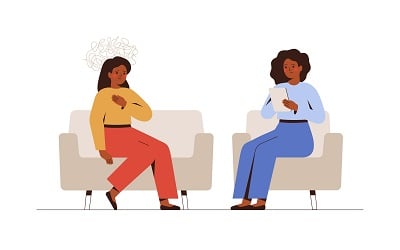Women, Unwanted Sexual Attention & Social Anxiety
Women, Unwanted Sexual Attention & Social Anxiety

There is an area of social anxiety that is practically a universal experience for girls and women, yet rarely gets discussed: non-touch unwanted sexual attention.
Such experiences happen to all people of all ages, and between all genders. For girls, the incidence is particularly alarming. From puberty to age 18, more than 90% of girls experience such unwanted encounters.
Non-touch sexual attention covers a wide range of behaviors, from eye contact, body scanning and name-calling, to catcalling and verbal invitations for intimacy or sex.
Initiating discussion of this topic during social anxiety counseling is a delicate process. The invitation sounds something like this:
“I often work with people in their 30’s and 40’s who have not discussed certain experiences related to social anxiety. How did struggling with social anxiety, as you’re going through puberty and early adulthood, impact your ability to navigate sexual attention from peers your age or older adults? What comes to mind for you?”
In my experience, few women struggling with social anxiety greet such questions calmly. Some women freeze, motionless in fear. Some disappear into a rabbit hole of memories or zone out. Some women experience an eruption of curiosity, yelling, “How did you know that?” and welcoming the opportunity to discuss an often taboo topic.
As such responses suggest, women well into their 30’s and 40’s don’t know how to respond to unwanted sexual attention in a way that feels clear, self-loving, and protective.
In social anxiety counseling, we focus on three essential skills to help women gain confidence in their ability to reject or accept uninvited non-touch sexual attention:
· Using your eyes to increase or decrease intensity during conversations
· Positioning your body to shut down unwanted social interactions
· Knowing how to end a conversation and leave
USING YOUR EYES
In counseling, we address the two eye-contact patterns common to social anxiety: avoiding eye contact and locking eyes (or a combo of the two). Both can increase miscommunication when encountering unwanted sexual attention.
Failing to make eye contact indicates that you will overlook unwanted attention or will not protect yourself if touched.
Locking eyes, on the other hand, enhances and intensifies the tension between two people. If the person’s eyes you’re looking into are sending you unwanted sexual signals, this risks enhancing the intensity and may be interpreted as welcomed attention.
During eye contact training, we look at ways to develop eye contact skills by observing other people’s typical eye movements. We notice how the listener moves their eyes up and down the speaker’s face, identifying microexpressions.
We also note how the listener’s eyes move about as they think and react to the speaker. Unlike people who struggle with social anxiety, the listener does not avoid eye contact or lock on the speaker’s eyes.
To avoid miscommunication and keep yourself safe during non-touch sexual attention, you will want to learn how to scan the room, scan another person’s body language and face, and only lock eyes when you want to increase intensity in the relationship.
POSITIONING YOUR BODY
How do you place your body when you notice a person sending you sexual signals?
If you’re interested, you open up your arms and move toward the person, or hold steady and not move away. If the sexual attention is unwanted, however, you want to close off your body. This can include stepping back, crossing your arms, breaking eye contact, scanning the room for exits, inviting another person into the conversation, or leaving. Most important, you want to move your body away from the person and step out of an arm’s reach. Always.
To strengthen the message, you can lift your hand as a warning, or offer a firm rejection statement like, “I don’t like that” or “I’m not interested.”
Can you imagine yourself doing that? If not, a good place to start is saying these phrases now in the privacy of your home. Go ahead, give it a try. Say it at a proper volume.
How does it feel?
Pick one go-to rejection statement. Keep saying it until you can hear a calm, stable, accessible power in your voice. Speaking is a form of body movement. If you can think, you can move; if you can move, you can remove yourself from the threatening situation.
ENDING THE CONVERSATION
For many people who struggle with social anxiety, the most awkward or challenging part of a brief interaction is ending the conversation. The key here is learning to grant yourself permission to quit an unwanted interaction.
Suppose someone is making you uncomfortable, and you want to end the conversation. In counseling, we practice the skill until it is a well-resourced, accessible action. At home, you can start by picking a phrase, like “I’m ending the conversation now” or “We’re done here.” Practice it until it feels comfortable.
No less important, believe your own words. Permit yourself to end any conversation at any time. You are not beholden to unwanted sexual attention. Ever.
A sexually-charged situation unfolds quickly. Rehearsing these three skills in mock conditions is essential, so you have a muscle memory wired in to assist you when you need to access the skills on demand.
To strengthen your skills, carve out some self-healing time. Give yourself at least four hours to reflect, journal, and ask yourself the questions highlighted in the article. Also, consider sending a copy of this article to your counselor with a request to discuss the topic in session. You deserve to feel confident in your ability to navigate non-touch unwanted sexual attention.












